 |
|
 |
|
 |
|
|
|
|

|
keeping & cultivation of mangroves
|
|
|
As long as you follow some very basic rules mangroves are surprising easy to keep and cultivate.
We are going to inform you about the various methods of keeping and cultivating mangroves and the specific characteristics of mangroves. We will also try to inform which mangrove species is suitable for the particular cultivation method.
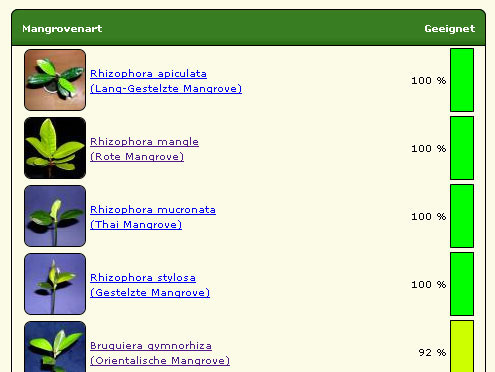
|
A specially developed online questionnaire helps you finding all mangrove species that fit to your growing conditions.
|
Furthermore you should also check out following information to find out more about mangroves:
- FAQ
- customer reports
You will be able to gain a lots of additional information.
|
|
|
|
Regardless of which mangrove species you keep, following equipment is absolutely necessary to be able to grow, keep and cultivate mangroves sustainably. As a general rule we can say that the better the equipment and the better the growing conditions are the better will be the growth of your mangroves:
- Artificial lights (9-13 hours a day) (if not enough sunlight is available)
- Sodium lamps
- HQI Lamps
- T5 Fluorescent tubes
- HBO (mercury lamps)
- T8 Fluorescent tubes
- other growing lamps for plants
- Air- and water temperatures during the day above 20°C (during the whole year)
- a few special mangrove species need more than 24°C
- perfect air temperature: 25-30°C
- perfect water temperature: 23-27°C
- during night the temperatures can fall within a normal range, temperatures below 10°C should not be reached at any moment
- Humidity of minimum 50 percent
- perfect humidity: as high as possible
- soil & fertilizer
- Mangrove Mud Special
- Mangrove Mud Basic
- no earth, use clay, sand of almost any kind (coaral sand only in marine water or brackish water), hydroponics or the like, you can also mix them. Perfect is Mangrove Mud Special.
- a minimum depth of 10cm for younger plants Jungpflanzen
- a minimum depth of 30cm for older plants Jungpflanzen
Mangroves can also be cultivated without any artifical lights at all, only with sunlight, this is only possible in regions near the equator (around 30° north and 40° south), mangroves are able to grow ther without artifical lights.
If you want to grow mangroves outside these regions, artifical lights are a must to provide enough light for mangroves to grow, even if the mangroves are grown in a winter garden or on a sill and the window is oriented to the south or any other similar circumstances, the mangroves will at least need additional artifical light for successfull growing. As always there are some exceptions like Barringtonia asiatica, Heritiera littoralis, Pandanus tectorius and Terminalia catappa which can survive and grow well without artifical lights.
If you grow mangroves from seeds, propagules or get them as very young plants which are not yet used to any certain conditions and you never get them used to intense light and keep them from the very beginning in cooler temperatures and lower humidity, most of the strong an tough mangrove species like Rhizophora mangle (Red Mangrove), Bruguiera gymnorhiza (Oriental Mangrove) and Avicennia marina (Grey Mangrove) will be able to get used to the offered conditions and will survive, the growth will be quite slow tough.
|
|
|
|
Mangroves are very special plants, they are unique in many ways and astonish people and scientists through their numerous impressive abilities again and again. Mangroves have many characteristics which can not be found in other plants, viviparity, the excretion and processing of salt as well as living in the tides.
If you cultivate mangroves in a mangrove basin the mangrove is the center of attraction and fully in focus, the equipment can be put together especially for the needs of mangroves, perfect lights with the right light spectrum, nutrient-rich soil, air pump or water pump for circulation, humidifiers, sprinkler system and some owners of a mangrove basin have a fully automatic high tide / low tide simulation system.
In most cases mangrove basins are made of aquariums and adopted to the special needs.
There are two options to set up the mangrove basin:
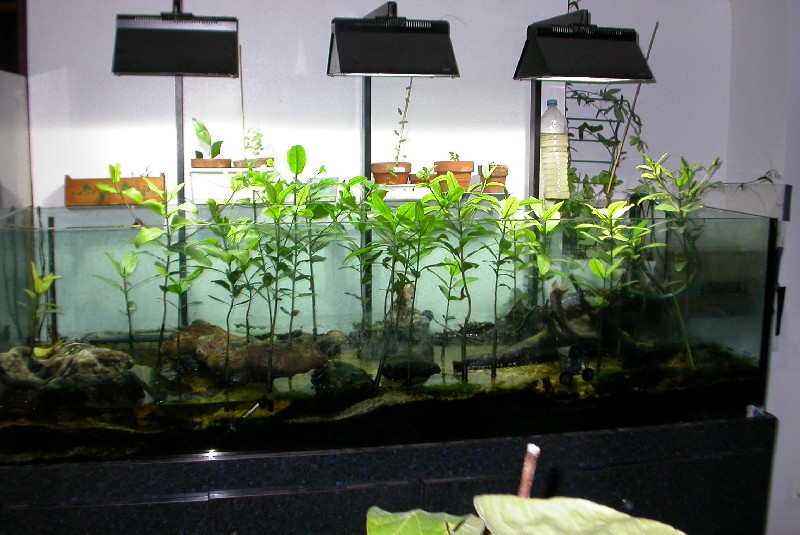
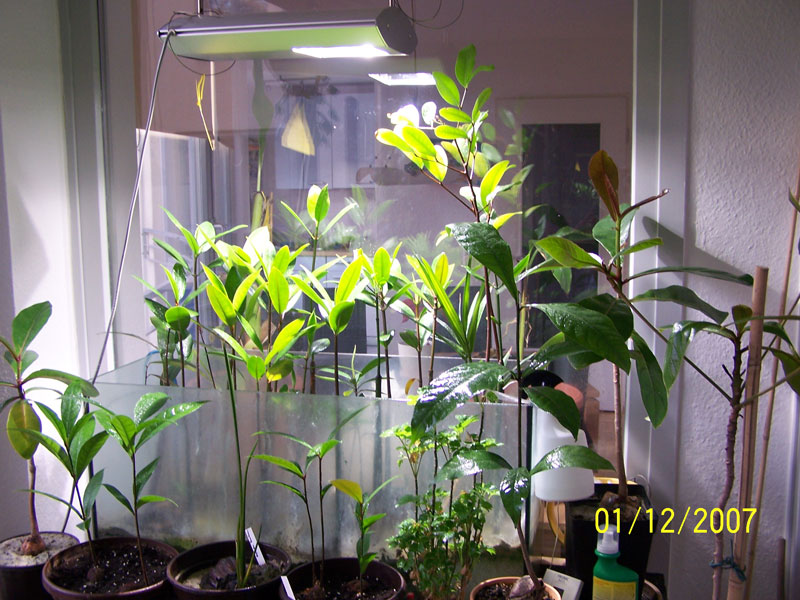
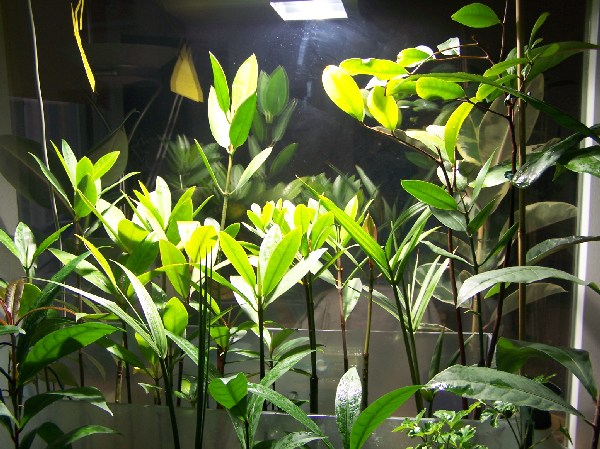

|
1. the soil substrate is directly spread on the floor of the aquarium, most mangrove basins are made this way. If done this way the soil should have a minimum height of 10cm, the more soil the better for the mangroves. The mangroves are planted directly into the substrate and water is added as long the water surface is a few centimeters above the ground level, watering the mangroves is not needed any more, there is enough water for a couple of days or weeks, depending on how quick the water is used up. When the water level is lower than the soil ground level you can fill up with water again.
This method simulates a little bit the tides, most mangroves get along very well if cultivated this way. Another advantage of this method is that you only have to water the mangroves a few times a months maybe even only once a months.
2. the mangroves are placed in single pots which are put in the empty aquarium. It is important that the pots are big enough and do not disturb the mangroves in developing their roots, the pots should have a minimum height and diameter of 15-20cm for smaller mangroves. As soon as all mangroves are in the aquarium it can be filled up with water. Make sure that the water level will be below the leaves of the mangroves.
The water level can be a few centimeters above the pots for example, important is that the plants are not fully submerged. Watering is not needed for a couple of days or weeks, depending on how quick the water is used up. When the water level is about 10cm you can fill up again.
This method simulates a little bit the tides, most mangroves get along very well if cultivated this way. Another advantage of this method is that you only have to water the mangroves a few times a months maybe even only once a months.
|
Regardless which mangroves you cultivate the substrate remains the same. We suggest to use soil which is similar to clay which is mixed with Mangrove Mud Special or Mangrove Mud Basic to enrich the soil with enough nutrients.
Stagnant rain water is best for mangroves in this case.
We recommend, regardless which option of mangrove basin you choose, to install an air pump or water pump for water circulation to prevent anaerobic bacteria. You can use pumps of different sizes or heaters to ensure water temperature also floor heating systems are possible, , a heater is also adviseable to ensure enough water temperature, there is no limit for your imagination, fully automatic mangrove basins with realistic low tide / high tide simulations exist already.
You can also add animals like mud skippers, some snails or crabs or the like to mangrove basins.
|
|
|
|
Normally mangroves grow in the tides of brackish water or marine water coasts and rivers, surprisingly that numerous of the mangroves that usually grow along the coast are perfectly suitable for freshwater aquariums without suffering from deficiency.
Mangroves are a real eyecatcher, an unusual, exotic and exceptional center of attraction in any freshwater aquarium. Fish, shrimp and other crustaceans as well as almost any other inhabitant of your aquarium will love the great hiding places mangroves can offer. The trunks of mangroves help tortoises breathing by holding on to them and some fish can more easily make their foam nests.
Mangroves are plants that do not grow underwater, mangroves need to be fully or partially above the water level and therefore are especially suitable for open aquariums where mangroves can grow out of the aquarium. Some smaller mangrove species which remain little can also be cultivated in closed aquariums as long as there is enough space between the water level and the lights where the mangroves have some space to grow and develop. The extrem high humidity in closed aquariums will make sure that mangroves develop quickly, if the growth is too fast you can cut back your mangroves so that new branches will develop and keep the plant small. In nature younger mangroves are often totally flooded during high tide therefore mangroves can survive for a certain time under water but will rot and die after a couple of days or weeks.
To bring mangroves into your aquarium will improve the well-being of all animals in your aquarium as well as the water quality as mangroves remove and filter pollutants like nitrite, nitrate and phosphate out of your aquarium water. Mangrove forests play an very important role in nature, they act as huge filters, nursery for uncountable animals, in aquariums mangroves relieve the mechanical filter and ensure that the well-being will improve, less algae will grow and the water quality will improve.
In order to calculate how many mangroves are necessary to ensure sustainable and balanced biological filtration you should use one mangrove for each 40 litres of aquarium water. An aquarium with about 240 litres for example would need about 6 mangroves, less mangroves will lead to a less strong filtration and it will take longer until the required filter performance will occur, more mangroves will speed up the required filter performance and wished water chemistry.
The growth of mangroves in aquariums cannot be compared to the growth of mangroves in nature. Generally we can say that mangroves growing in aquarims grow more restrained, in nature a mangrove propagule develops within a few years to a small tree with numerous aerial roots, in your aquarium mangroves will remain little even when some years passed by. We can say that mangroves in aquariums grow more like bonsais. By selective trimming of mangroves you are able to control the growth and can force the mangrove to develop branches, all in all you can controll the size and shape of your mangrove.
Spraying mangroves with water increases the local humidity and therefore influences the growth of mangroves in a positiv way.
In conclusion we can say that mangroves filter numerous 'pollutants' and therefore the nutrients for algae which will decimate, implementation periods of new aquariums can be reduced, the natural and biological filtration of mangroves relieves your mechanical filtration system and the well-being of all animals and plants in your aquarium will move up.
You can cultivate mangroves in your freshwater aquarium in many different ways:
ground
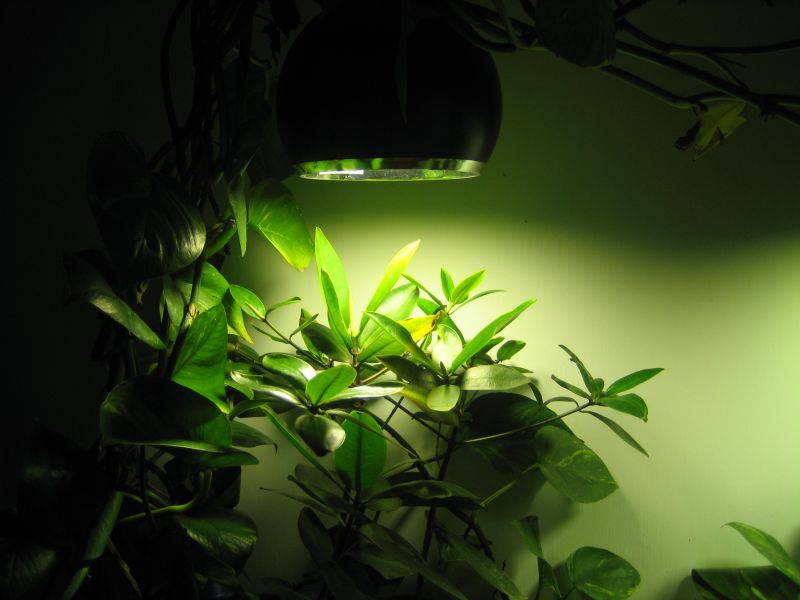
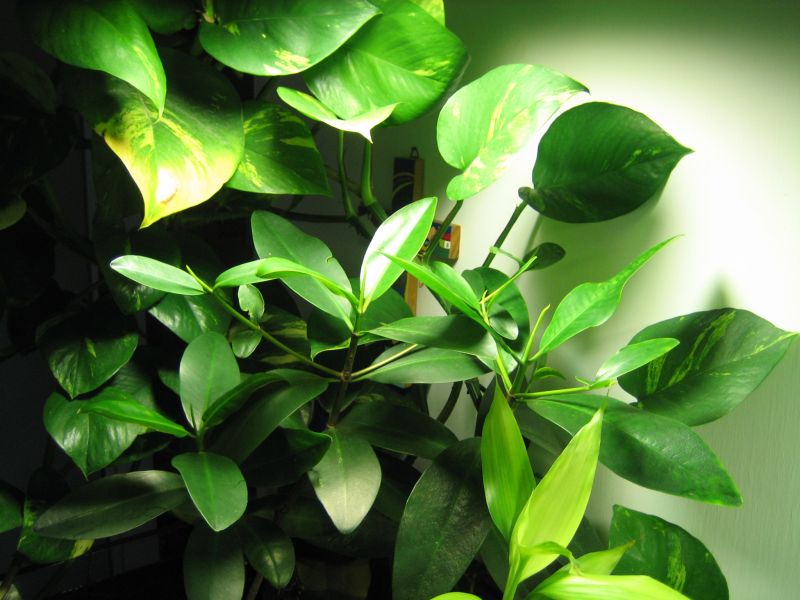
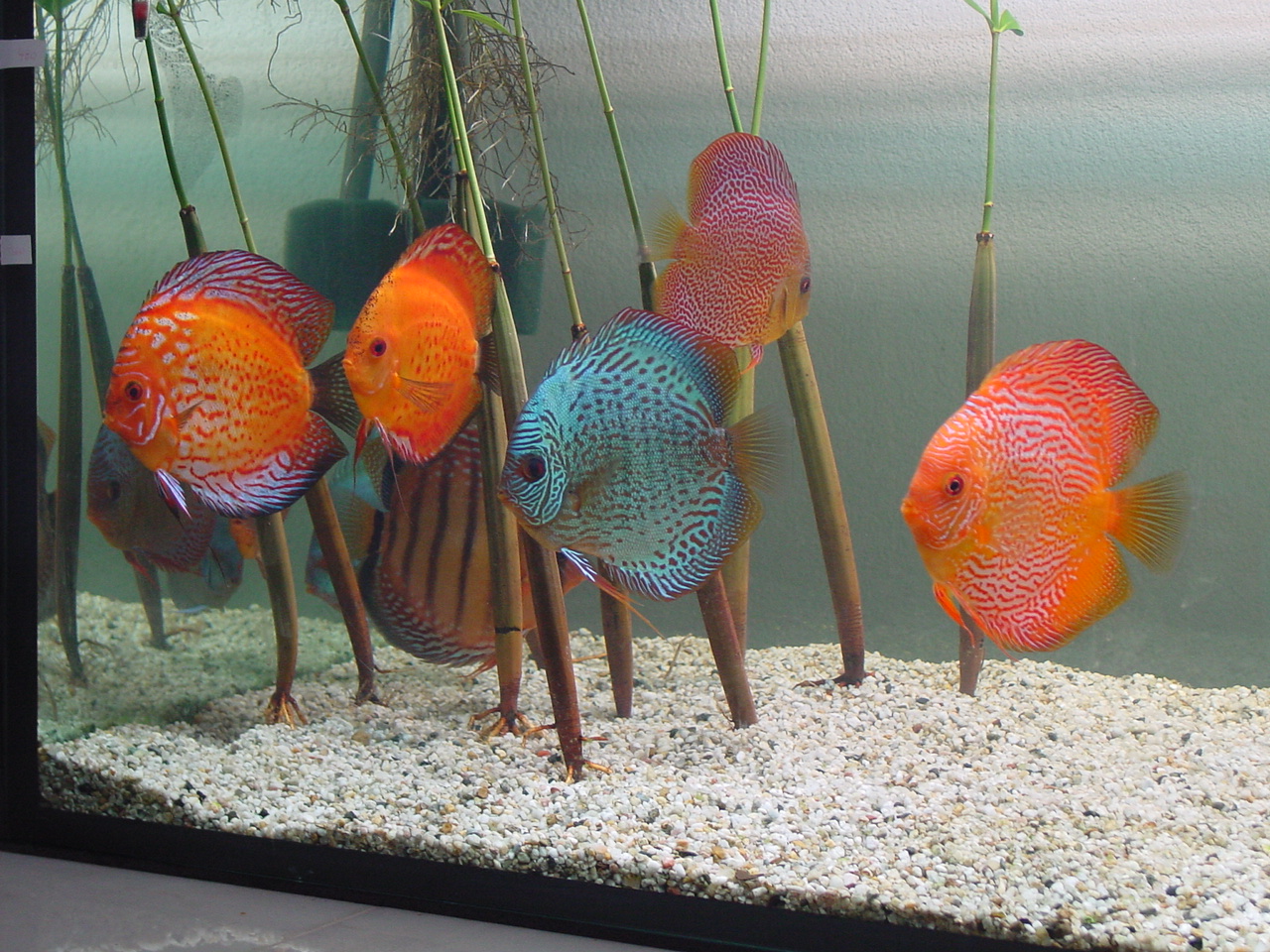
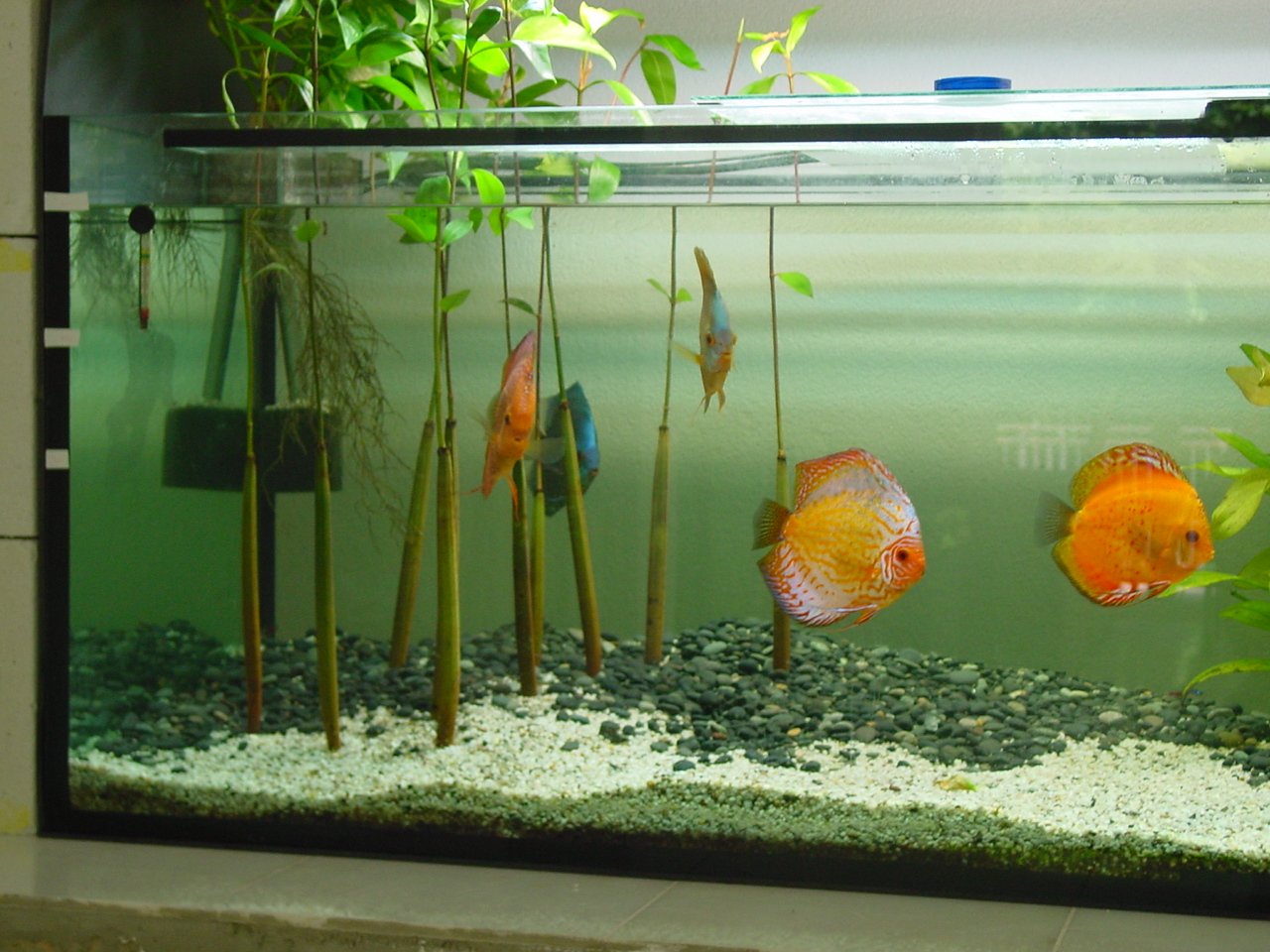
|
Mangroves which are tall enough can be placed directly into the ground of an aquarium, it is important that the youngest leaves are above the water level. Generally mangroves placed in the ground grow brilliant, the numerous waste materials, pollutants and nutrients that all go into the ground provide everything the mangrove needs. Often long-term fertilizers are in the ground of aquariums and even ensure more nutrients for mangroves which will lead to magnificent growth.
When placing the mangrove in the aquarium leaves can be under water, as long as the youngest leaves are above the water level the mangrove will develop well. Placing the mangrove fully under water will let the mangrove rot and die after a couple of days or weeks.
Mangroves growing in the ground develop an extensive roots system of about 20 to 40cm in diameter. The very well known aerial roots are not developed in freshwater aquariums. The roots of mangroves adopt to the size and shape of the aquarium as any other usual water plant for aquariums without destroying the glass in any way.
A disadvantage of keeping mangroves in the ground of an aquarium is that mangroves will suffer from stress when the aquarium is redesigned and the mangrove is suddenly taken from its location and replaced. Often mangroves stop their growth for a couple of weeks if replaced, in worst case even can die. If a redesign is necessary and the mangrove really needs to be replaced make sure that as much ground substrata remains on the roots as possible to reduce stress.
You can counteract this disadvantage with net pots, simply put the mangrove first in a net pot before putting the mangrove in the ground, when replacing the mangrove most of the roots will not be stressed at all as they remain in the substrate which is in the net pot. With this method you reduce stress to a minimum and the chances for the mangrove to survive the relocation are excellent.
|
filter basin
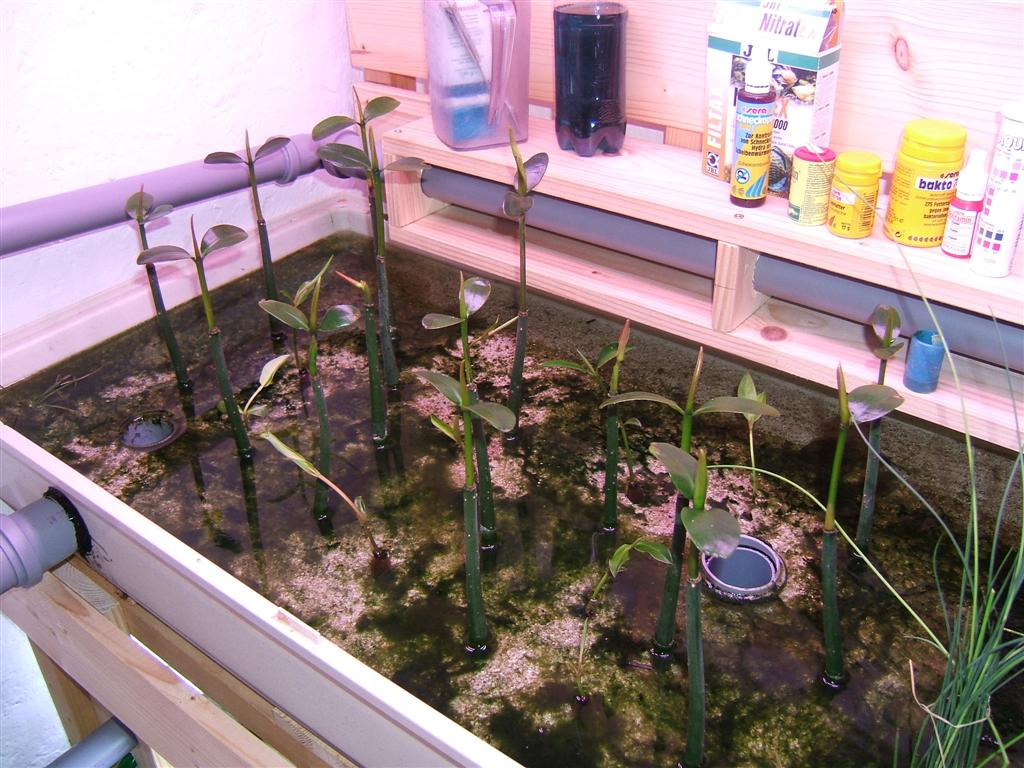
|
Filter basins are normally used in marine aquriums, especially big aquariums have to have one. Filter basins are not common for freshwater aquariums.
If a freshwater aquarium has a filter basin, sometimes many aquariums are connected and they have one central filter station, mangroves can be placed in there of course as well.
|
net pot
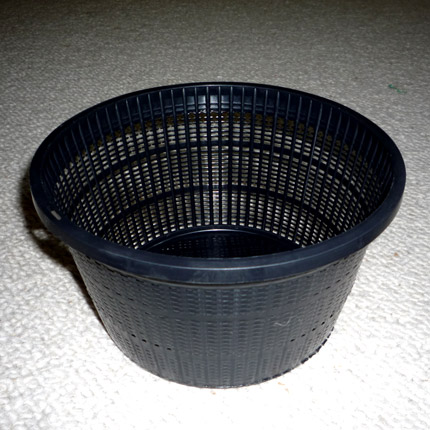
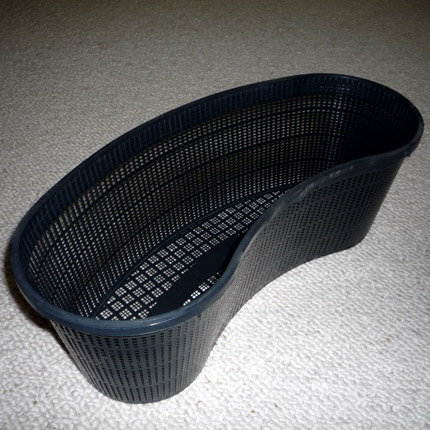
|
Instead of growing mangroves in the soil of the aquarium or the like you can cultivate mangroves in net pots which are perfectly suitable for aquariums. Net pots are available in our online-shop in different shapes and sizes. Fill up the pots with the soil of your aquarium and place the mangroves inside.
You can put net pots on or in the soil of your aquarium. If you place net pots outside the soil of your aquarium you can cover them with some decoration like mangrove roots, stones or the like. Whenever you redecorate your aquarium or for any other reasons need to move the mangroves you can simply take them with the net pot and most of the roots will still be covered by soil. This method is one of the best to avoid stress and harm to mangroves.
Further advantages of net pots are that you can almost cultivate any mangrove species this way in your aquarium and that you can even cultivate mangroves that normally would be to little as you can place the net pots on stones or other objects to increase height, with the growth of the mangrove you can move the net pot down to the soil of the aquarium.
-> buy net pots now
|
Mangrove root
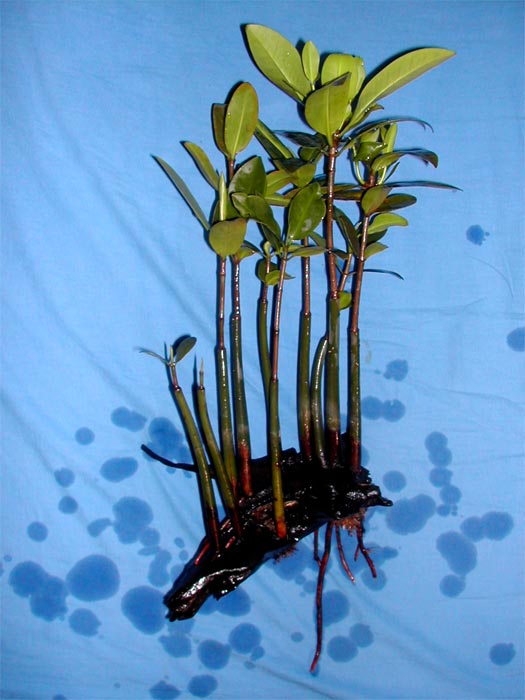
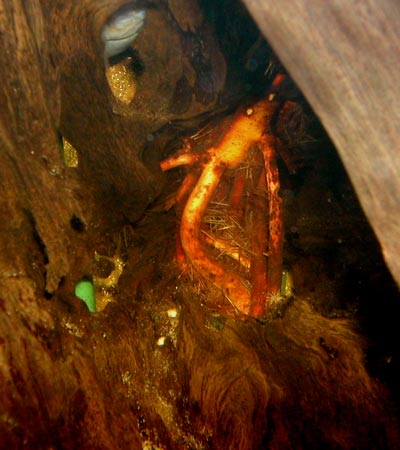
|
Generally woods and roots in aquariums are from mangroves.
Only Rhizophora mangle (Red Mangrove) is able to root on woods or roots. If you place a mangrove on wood it is important to find a place where the roots have enough space to develop. Best is if you put the mangrove strong enough in a crack or the like so that no string or any other materials for attachment are needed.
Nutrients are taken from the water in your aquarium and also deposit in roots and woods, the nutrients can be taken from the mangrove plant through its roots from the wood and also from the surrounding water. The roots of the mangrove will grow uninterrupted towards the ground of your aquarium where they can one day also take nutrients from.
Roots or woods can be very helpful to increase height of a mangrove if the mangrove is too small and would be totally under water if placed in the ground. To work around this problem the mangrove can be placed on the wood or root so that the leaves are above the water surface.
Cultivation of Rhizophora mangle (Rote Mangrove) on roots or woods is a successfull method of keeping this mangrove species in a freshwater aquarium and normally leads to magnificent growth.
|
Clip holder
Mangrove propagules, especially so called torpedo seeds which have a length between 10 to 90cm can be placed at clip holders. Put the mangrove on the clip and place it anywhere in the aquarium, you can vary height and place, the only thing to consider is that the tip of the mangrove needs to be above the water surface. The sprout of the mangrove grows and roots start to develop and grow towards ground and take nutrients from the surrounding water. This method is simple and practical but it is a unnatural way of keeping mangroves, roots are exposed to light and can't find hold as they can't root on something. This method of keeping mangroves is good for a couple of weeks or months, the mangrove grows and the additional centimeters are probably enough to place the mangrove afterwards directly in the ground of your aquarium.
At this place we would like to mention, that this way of keeping mangroves should be avoided if possible, the replacement that needs to be done later on will can be stressful to the mangrove. We advise to think first where and how to cultivate mangroves and if necessary to prepare everything needed before buying them.
stone
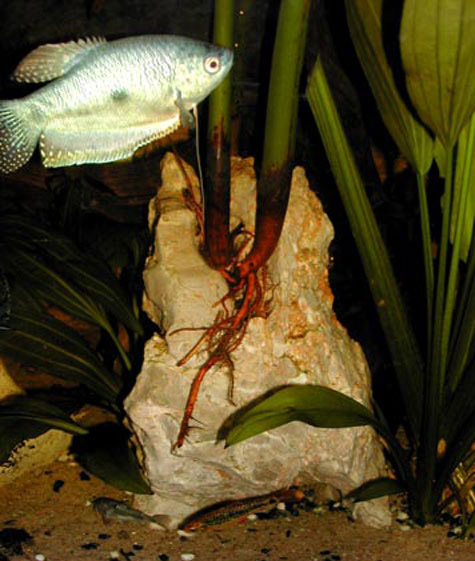
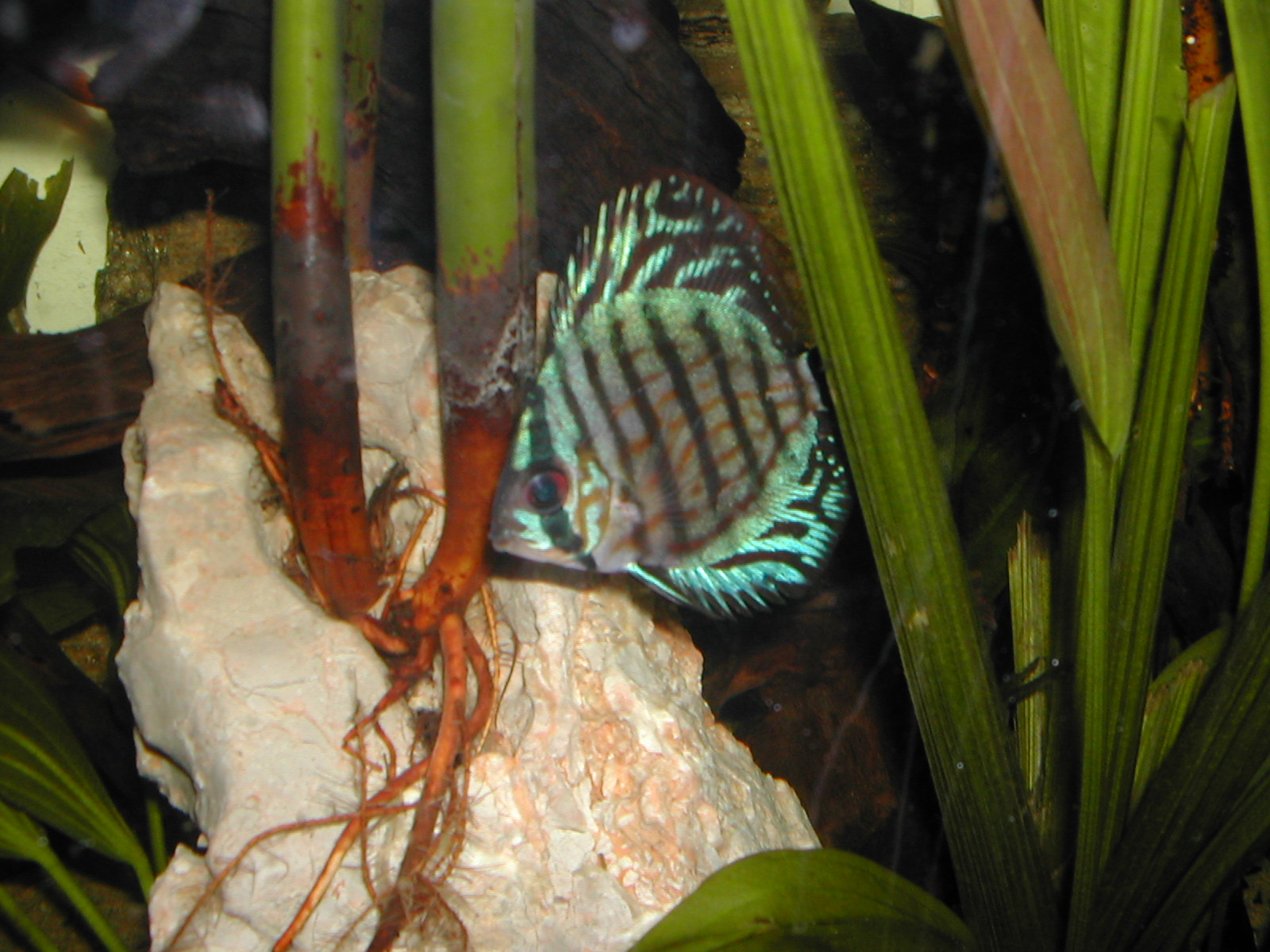
|
Numerous experiments have shown, that only Rhizophora mangle (Red Mangrove) can be successfully cultivated on stone. If you place a mangrove on stone it is important to find a place where the roots have enough space to develop. Best is if you put the mangrove strong enough in a crack or the like so that no string or any other materials for attachment are needed.
A big disadvantage of stones is that nutrients can not deposit in stones, not like in roots or woods where mangroves can take some nutrients from. Mangroves cultivated on stones fully depend on nutrients from the surrounding water or when the roots reached ground where they can take nutrients from.
Cultivation of Rhizophora mangle (Red Mangrove) on stone requires some knowledge and luck, not as easy as cultivating mangroves in the ground of an aquarium or on roots or woods.
|
|
|
|
|
In einem Meerwasseraquarium kommen die exotischen Mangroven ganz besonders schön zur Geltung, sind doch Mangroven, neben den meistens unerwünschten Algen, die einzigen Pflanzen die in einem Meeresbecken wachsen und gedeihen und das in voller Pracht! Das Wasser eines Meerwasseraquariums beinhaltet im Regelfall alle Nährstoffe die für ein kräftiges und prachtvolles Waclhstum von Mangroven notwendig sind, sogar sogenannte Schadstoffe die oft zu unerwünschten Wasserwerten führen, werden durch Mangroven aufgebraucht und somit der Chemiehaushalt des Wassers ins Gleichgewicht gebracht. Nitrit, Nitrat und Phosphat stehen dabei ganz oben auf der Liste, dazu jedoch später noch mehr.
Die einzigartigen Luftwurzeln auch Pneumatophoren genannt werden von Mangroven vor allem in Meeresaquarien ausgebildet, so bieten Mangroven eine ganz außergewöhnliche Erscheinung, die prachtvolle Tier- und Korallenwelt unter Wasser und die Mangrove mit ihren ungewöhnlichen Blättern oberhalb der Wasseroberfläche und die prächtigen Pneumatophoren sind unterhalb als auch oberhalb der Wasseroberfläche zu sehen. Sollte der unwahrscheinliche Fall eintreten, dass die Pneumatophoren zu kräftig wachsen, so können diese problemlos gestutzt werden ohne der Mangrove größeren Schaden zuzufügen. Ängste, dass die Pneumatophoren einer Mangrove ein Aquarium beschädigen oder gar zum sprengen bringen können sind gänzlich unbegründet.
Die Blüten einer Mangrove erfreuen jeden Mangrovenhalter. Mangroven wachsen in der Natur zu Bäumen bzw. auch Sträucher heran, im Aquarium hält sich das Wachstum stets in Grenzen und Mangroven wachsen über eine überschaubare Größe nicht hinaus, sie gedeihen wie Bonsais. Erst wenige Aquarianer schafften es Mangroven zum blühen zu bringen, jene die es schafften gedulteten sich meiste mehrere Jahre lang, erfahrungsgemäß beginnen Mangroven in Meeresaquarien nach 6 bis 10 Jahren zu blühen. Es sind bereits mehrere Fälle von Mangrovenhaltern in Österreich und Deutschland bekannt die unterschiedliche Mangrovenarten zu blühen brachten, darunter Avicennia officinalis, Bruguiera gymnorhiza und Rhizophora mangle. Die Frage ist nicht ob Mangroven blühen, sondern wann.
Alleine die Blätter sind Grund genug um eine Mangrove im Meeresbecken zu kultivieren, verschiedenste Färbungen und Formen der unterschiedlichen Mangrovenarten bieten eine nie dagewesene Abwechslung in der Meeresaquaristik. Ganz besonders interessant sind jene Mangrovenarten die über einzigartige Salzdrüsen an der Blattunterseite Salz in Form von Kristallen ausscheiden, vor allem Mangroven der Gattung 'Avicennia' haben diese Eigenschaft, aber auch Mangroven der Gattung 'Aegialitis' und 'Aegiceras'.
Besprühen von Mangroven erhöht die lokale Luftfeuchtigkeit und beeinflusst das Wachstum einer Mangrove positiv.
Zusammenfassend kann festgehalten werden, dass Mangroven durch den Entzug zahlreicher 'Schadstoffe' den Algen grundlegende Nährstoffe entziehen und diese somit dezimieren, Einführungsphasen eines Aquariums durch den Schadstoffentzug verkürzt werden können, die natürliche Filterung von Mangroven den mechanischen Filter entlastet und die Gefahr, dass das Aquariumwasser kippt (biologisch gesehen) verringert wird, zugleich das Wohlbefinden aller Aquarienbewohner steigt.
Mangroven können im Meerwasseraquarium auf unterschiedliche Weisen kultiviert werden:
Bodengrund
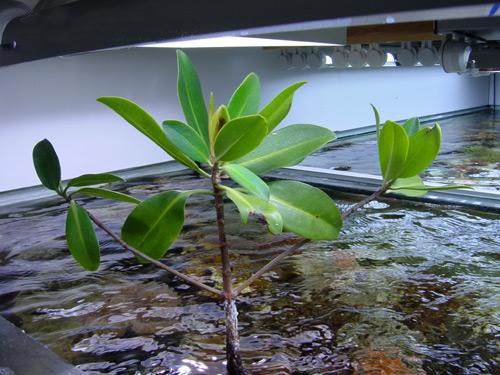
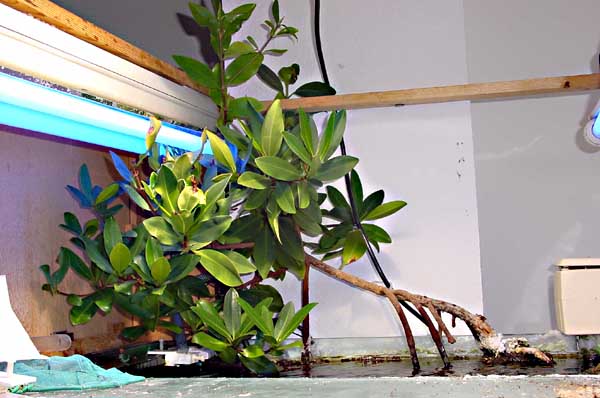
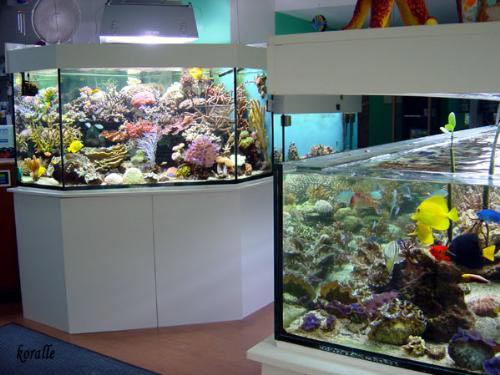
|
Im Gegenteil zur Süßwasseraquaristik besteht die Bodenschicht eines Meerwasseraquariums oft nur aus wenigen Zentimeter, oftmals zu wenig um Mangroven ausreichend Platz zum Wurzeln zu bieten. Sollte eine ausreichend tiefe Bodenschicht vorhanden sein, dabei empfiehlt sich eine Tiefe von mindestens 5 bis 6 Zentimeter, empfiehlt es sich Mangroven direkt in das Bodensubstrat zu pflanzen insofern diese groß genug sind um die obersten Blätter über der Wasseroberfläche zu haben. Abfall-, Schad- und Nährstoffe welche sich im Bodengrund eines Aquariums sammeln dienen den Mangroven als hervoragende Nährstoffquelle.
Beim Einbringen der Mangrove in das Aquarium kann diese so platziert werden, dass auch bestehende Blätter sich unter der Wasseroberfläche befinden, solange der Trieb und die jüngsten und somit obersten Blätter der Mangrove über der Wasseroberfläche befinden wird sich die Mangrove gut entwickeln. Würde die Mangrove subers gehalten werden so würde sie nach wenigen Wochen absterben.
Einmal im Bodengrund gepflanzt, entwickeln die Mangroven ein weitläufiges Wurzelsystem im Radius von ca. 20 bis 40cm. Typische Luftwurzeln, für die Mangroven weltweit bekannt sind, werden in einem Meerwasseraquarium nach ca. 1,5 bis 2 Jahren ausgebildet. Die Wurzeln der Mangrove passen sich der Aquarienform an und wachsen entlang der Glasscheiben ohne das Aquarium dabei zu beschädigen.
Ein Nachteil der Haltung von Mangroven im Bodengrund ist der Stress den Mangroven erleiden, wenn das Aquarium umgestaltet wird und die Mangrove ihrem gewohnten Standort plötzlich entrissen wird und einem neuen Ort des Aquariums zugewiesen wird. Oftmals reagieren Mangroven mit einer wochenlangen Wachstumspause, im schlimmsten Fall kann dieser Stress sogar zum Sterben der Pflanze führen. Sollten eine solche Umstellung wirklich notwendig sein, empfiehlt es sich, soviel Bodensubstrat wie möglich an den Wurzeln zu belassen und die Pflanze mit diesem zu übersiedeln.
Diesem Nachteil kann mit Gittertöpfen entgegengewirkt werden, einfach einen Gittertopf in die Bodenschicht des Aquariums einbringen und die Mangrove innerhalb des Topfes kultivieren, so kann sichergestellt werden, dass ein Großteil des Wurzelballens mit dem gewohnten Substrat und somit der gewohnten Umgebung übersiedelt. Mit dieser Methode wird der Stressfaktor minimalisiert und die Chancen für die Mangrove die Übersiedelung gut zu überstehen sind optimal.
|
Filterbecken
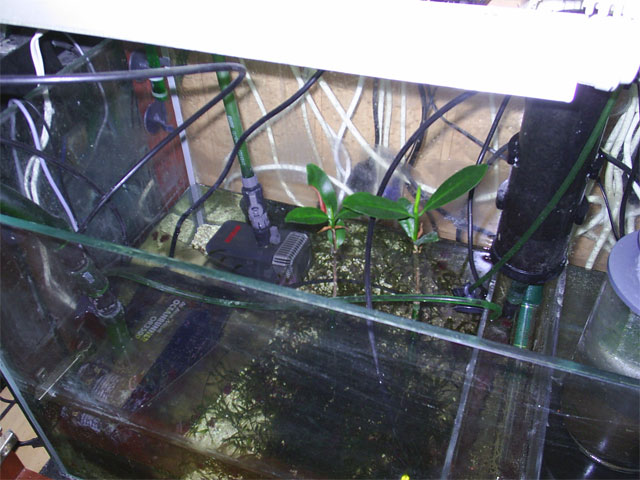
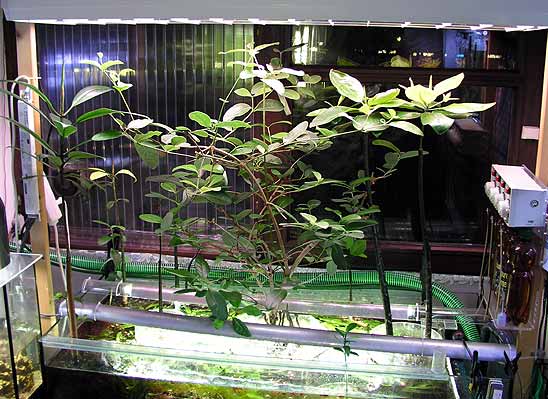
|
Filterbecken sind in der Meeresaquaristik ein wichtiger Bestandteil der Meerwasseranlage. Zumeist handelt es sich um ein Aquarium das kleiner ist als das eigentliche Meerwasseraquarium selbst, jedoch ausreichend Platz für die Technik der Anlage bieten.
Oftmals werden diese Filterbecken erweitert, etwa mit speziellen Algen die der Wasseraufbereitung dienen oder unterschiedliche Sandarten die eingebracht werden können um ein natürlicheres Klima zu verschaffen, und auch hier können Mangroven von großem Vorteil sein, allerdings nur unter gewissen Umständen.
Da Mangroven nicht submers (unter dem Wasser) wachsen, sondern ihre Blätter über der Wasseroberfläche bilden, wird etwas Platz über dem Filterbecken sowie entsprechende Beleuchtung benötigt um Mangroven erfolgreich im Filterbecken kultivieren zu können. Sind diese Bedingungen gegeben, können mehrere Mangroven einer Art als auch verschiedenen Mangrovenarten im selben Filterbecken untergebracht werden um so die mechanische Filterleistung der Anlage zu entlasten und die Wasserqualität zu steigern. Versuche mit reinen Mangrovenfilterbecken haben sich als sehr positiv bewiesen, auf mechanische Filterbecken kann deshalb jedoch nicht verzichtet werden.
|
net pot


|
Net pots are probably the best solution for keeping mangroves in marine aquariums.
Instead of growing mangroves in the soil of the aquarium or the like you can cultivate mangroves in net pots which are perfectly suitable for aquariums. Net pots are available in our online-shop in different shapes and sizes. Fill up the pots with the soil of your aquarium and place the mangroves inside.
You can put net pots on or in the soil of your aquarium. If you place net pots outside the soil of your aquarium you can cover them with some decoration like living stones or the like. Whenever you redecorate your aquarium or for any other reasons need to move the mangroves you can simply take them with the net pot and most of the roots will still be covered by soil. This method is one of the best to avoid stress and harm to mangroves.
Further advantages of net pots are that you can almost cultivate any mangrove species this way in your aquarium and that you can even cultivate mangroves that normally would be to little as you can place the net pots on stones or other objects to increase height, with the growth of the mangrove you can move the net pot down to the soil of the aquarium.
-> buy net pots now
|
Lebendgestein
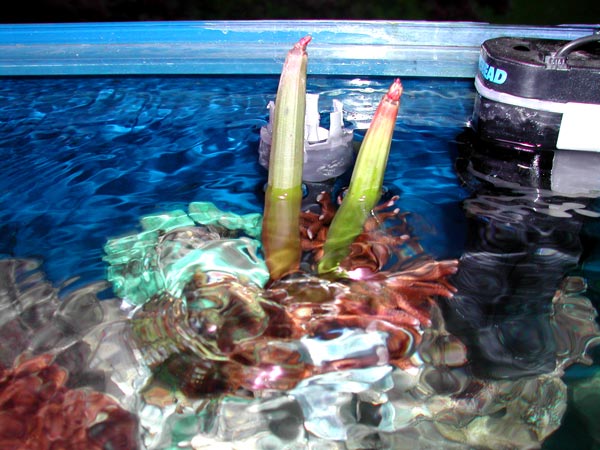
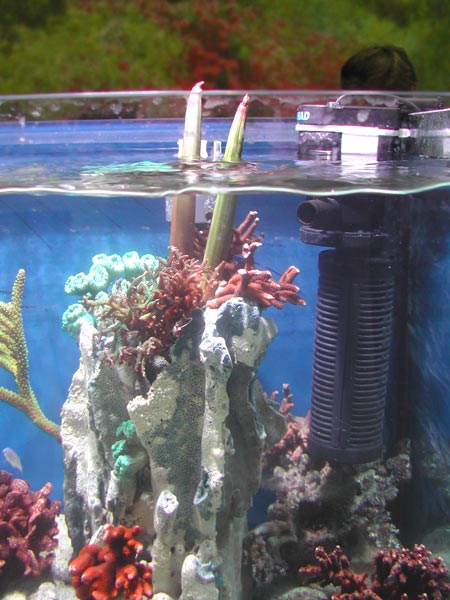
|
Mangroven gedeihen in Lebendgestein. Erfahrungsgemäß lassen sich vor allem Bruguiera gymnorhiza, Rhizophora apiculata und Rhizophora mangle, an Lebendgestein erfolgreich anwurzeln. Hierbei ist es wichtig darauf zu achten, dass die Wurzeln der Mangrove aussreichend Platz haben um sich entfalten zu können um nicht in einer 'Sackgasse' zu enden. Die Mangrove wird am besten in einen Spalte oder ein passendes Loch des Lebendgesteins gesteckt, dabei sollte sie so fest gesteckt werden, dass die Verwendung von Korallenkleber oder anderen Befestigungsmaterialien nicht erforderlich ist. Sollte keine passende Stelle gefunden werden, so kann die Mangrove auch mittels Korallenkleber befestigt werden, wichtig ist dabei darauf zu achten, dass der untere Bereich der Mangrove, an welchem sich die Wurzeln entwickeln, von Korallenkleber frei bleibt und vor direkter Lichteinstrahlung so gut wie möglich geschützt wird.
Durch vorbeiströmendes Wasser werden die Mangroven mit allen notwendigen Nährstoffen versorgt. Die Wurzeln der Mangrove wachsen kontinuierlich der Bodenschicht des Aquariums entgegen und werden so auch einst dem Bodengrund Nährstoffe entziehen. Es kann durchaus passieren, dass die Wurzeln mehreres Lebendgestein miteinander verbindet.
Oftmals ist Lebendgestein auch dann praktisch, wenn die Mangrovenpflanze nicht groß genug ist um direkt in den Bodengrund gepflanzt werden zu können, da sonst die gesamte Pflanze unter Wasser wäre. Um dieses Problem zu umgehen, kann die Mangrove auf Lebendgestein gepflanzt werden um diese zu erhöhen, sodass die Blätter über der Wasseroberfläche sind und sich die Pflanze entsprechend entwickeln kann.
|
Saugnapf
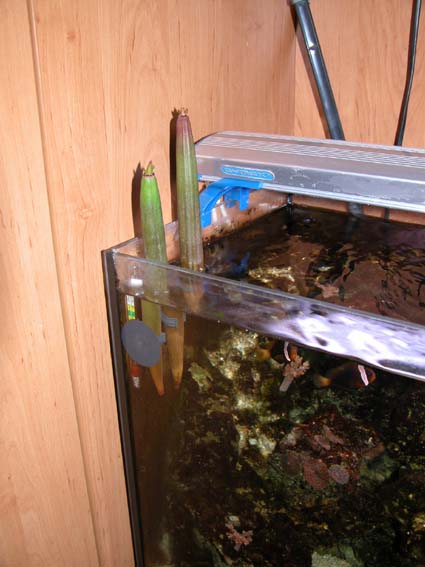
|
Mangroven, vor allem sogenannte Torpedosamen, zigarrenförmige Samen zwischen 10 bis 90cm, eignen sich gut um diese an einem Saugnapf zu fixieren. Der Saugnapf kann mit der Mangrove an einem beliebigen Ort und in beliebiger Höhe im Aquarium platziert werden, lediglich muss sich die Spitze des Torpedosamens über der Wasseroberfläche befinden. Der Trieb des Samens wächst, die Wurzeln entwickeln sich in Richtung Boden und entziehen vorbeiströmendem Wasser die nötigen Nährstoffe. Diese Methode scheint praktisch und einfach, allerdings darf nicht vergessen werden, dass es eine recht unnatürliche Haltung ist, die Wurzeln sind dem Licht ausgesetzt und finden keinen Halt, daher ist diese Art der Haltung nur für wenige Monate möglich, oftmals vielleicht von Vorteil um die Mangrove wachsen zu lassen um so eine entsprechende Größe zu erreichen damit diese später direkt in den Bodengrund gepflanzt werden kann.
An dieser Stelle wird jedoch empfohlen, dass diese Methode, wenn möglich, zu vermeiden ist, die später nötige Umstellung zur Kultivierung in der Bodenschicht des Aquariums oder Anwurzelung auf Lebendgestein bedeutet unnötigen Stress für die Mangrove. Empfehlenswert ist, sich gleich von Anfang an Gedanken über die nachhaltige Kultivierung der Mangrove zu machen und diese von Beginn an entsprechend zu platzieren.
|
|
|
|
|



|
Mangroves perfect for paludariums, high humidity, tropical temperatures, artificial lights and sprinkler systems offer a great environment for mangroves to develop.
Because of the tropical conditions offered in a paludarium as well as the possibility to let the mangrove grow in water or land enables almost all mangrove species to be cultivated in paludariums.
Mangroves which prefer to be cultivated in water can be cultivated in the water area as shown here freshwater aquarium, mangrove that normally grow a litte bit more land inward as Barringtonia sp., Heritiera littoralis, Nypa fruticans, Pandanus tectorius or the like can be cultivated at the land part of the paludarium.
|
|
|
|
|
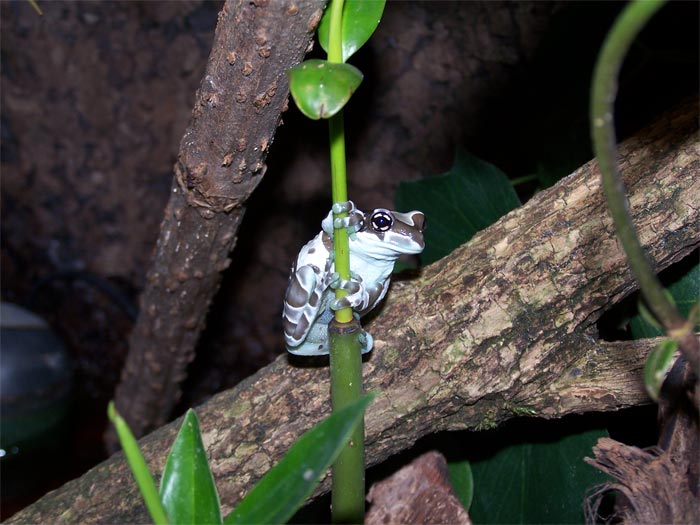
Poison dart frog on Rhizophora mangle
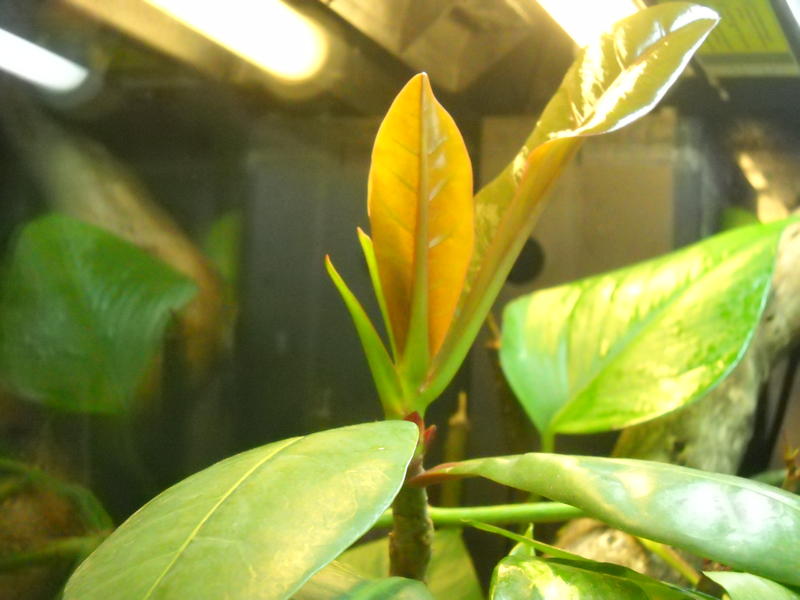
Barringtonia asiatica
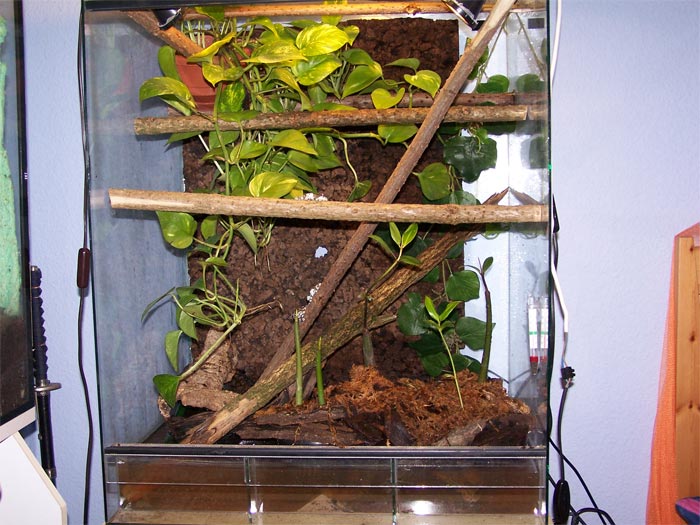
Bruguiera gymnorhiza and Rhizophora mangle
|
Mangroves are very exotic and an eye catcher in a terrarium. The humidity of most tropical terrariums is perfect for the growth of mangroves.
Especially little animals as anolis, geckos, poison dart frogs, spiders and the like welcome the exotica mangroves. The tough and leathery leaves cannot be damaged by these animals, bigger animals can damage and even eat mangroves for example Iguana Iguana which also love to eat mangrove leaves in their natural habitat.
When cultivating mangroves in terrariums it is important not to let them grow in organic substrate such as common earth or the like. It is necessary to grow mangroves in special soil such as Mangrove Mud Special, more information can be found at pot plant.
Cultivating mangroves in substrate which is not suitable for mangroves can lead to death of the mangroves. Numerous mangroves have a huge stock of nutrients from the mother tree which helps them to survive even in inappropriate growing conditions but will also lead to death after a couple of months when all nutrients are used up.
By cutting you can control the growth of mangroves and can force the mangrove to develop branches early.
We recommend to spray daily to increase humidity.
|
|
|
|
|
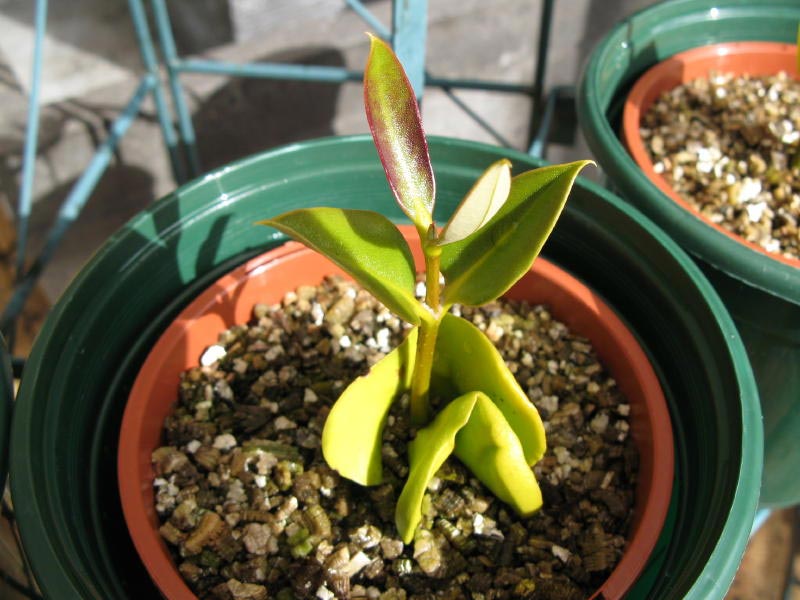
Avicennia marina var. marina
Juni 2009, Australien
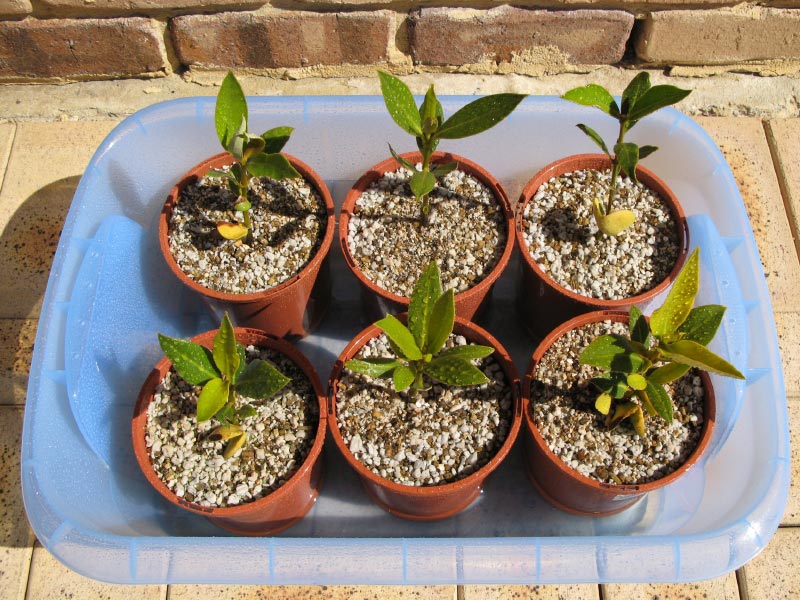
Avicennia marina var. marina
August 2009, Australien
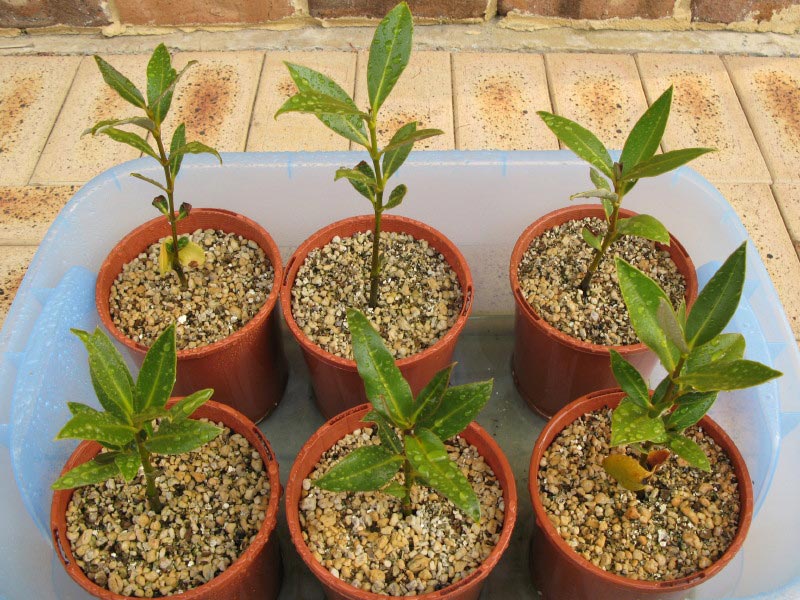
Avicennia marina var. marina
November 2009, Australien
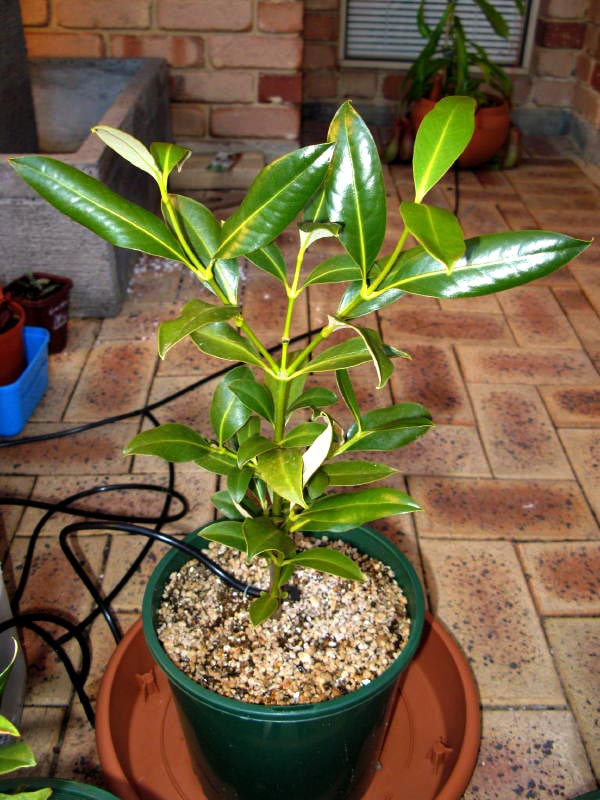
Avicennia marina var. marina
Mai 2010, Australien
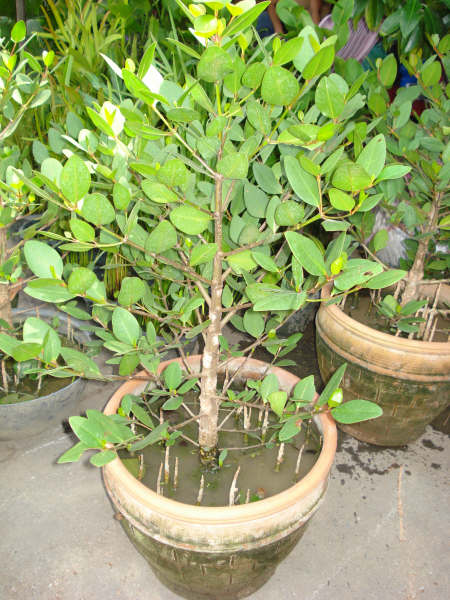
Sonneratia sp.
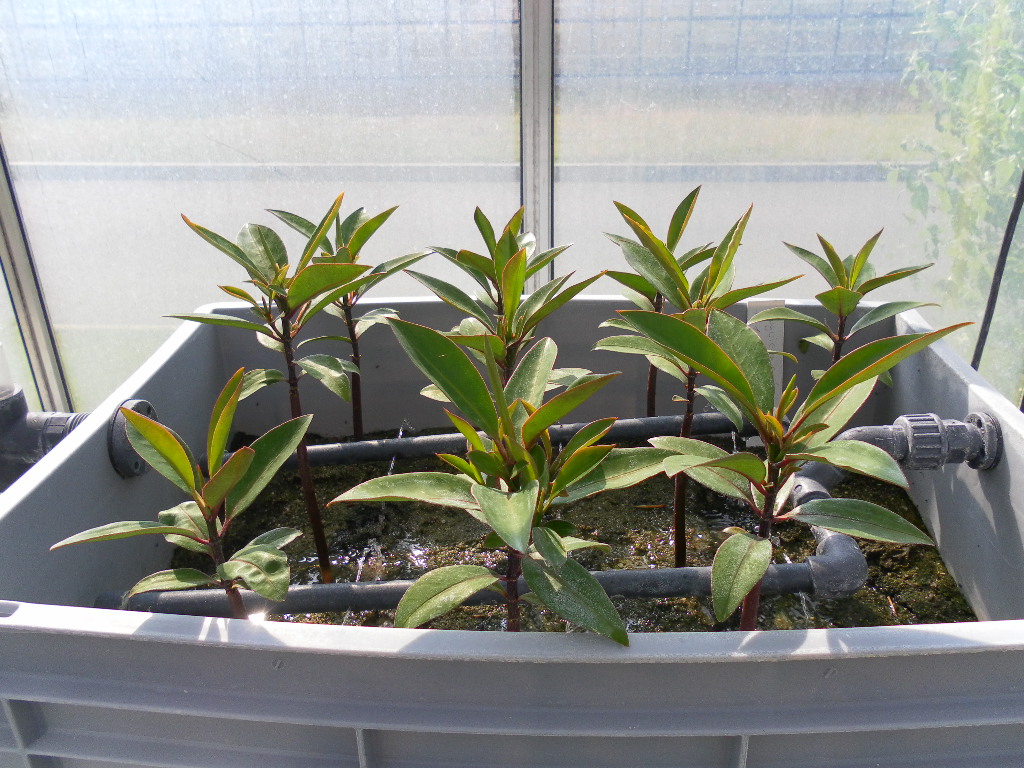
Bruguiera cylindrica, Deutschland
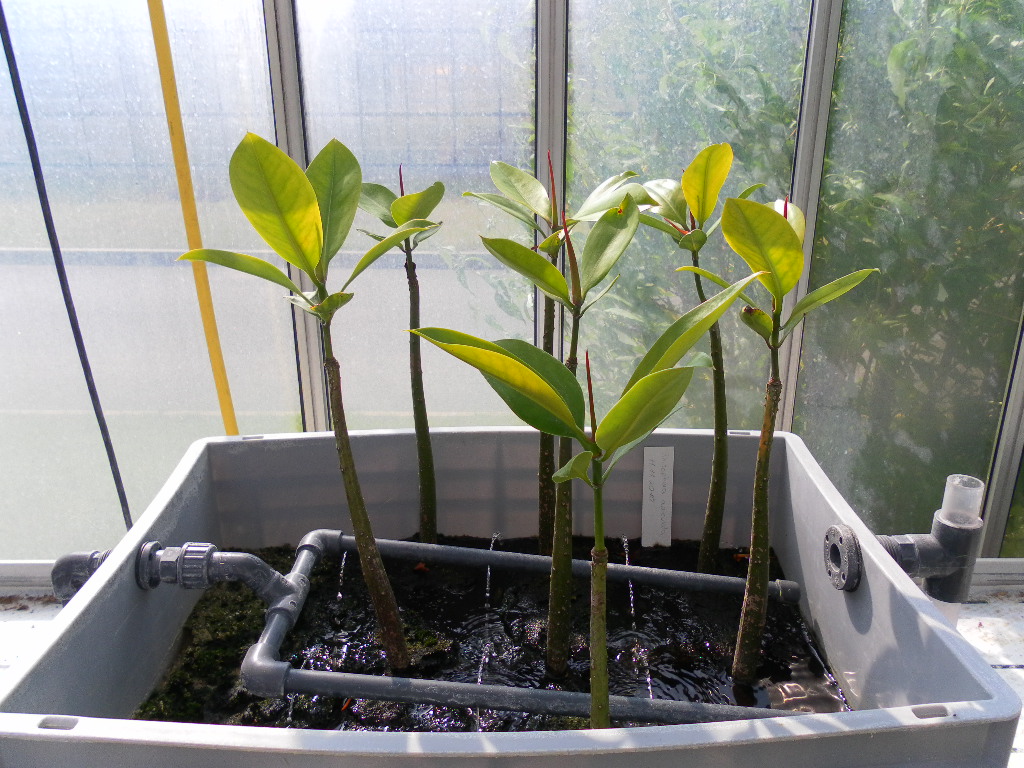
Rhizophora apiculata, Deutschland
|
Alle Mangrovenarten sind für die Kultivierung als Topfpflanze geeignet.
Egal ob am Fensterbrett, im Wintergarten, in geeigneten Breiten das ganze Jahr über im Freien in ungeeigneten Breiten den Sommer über im Freien, Mangroven sind eine außergewöhnliche Erscheinung. Je nach Art der Kultivierung können Mangroven bis zu mehrere Wochen lang nicht gegossen werden oder jeden Tag gegossen werden, ohne dass diese davon Schaden nehmen. In Japan gilt die Topfpflanze "Mangrove" schon lange als beruhigende, schlichte und harmonische Dekoration!
Hinsichtlich der Mangrove als Zimmerpflanze können diese in zwei Gruppen gegliedert werden, jene die sich nicht in organischem Substrat kultivieren lassen und jede die organisches Substrat bevorzugen.
1. Mangroven für nicht organisches Substrat:
Nicht organisches Substrat bedeutet Schlamm, Lehm, Ton, Sand, Kies und ähnlichem. Mangroven die einen sehr nährstoffreichen, schlammartigen Boden benötigen zählen meist zu den "echten" Mangroven. Echte Mangroven bilden typischer Weise Luftwurzeln aus, sind sehr salztolerant und vertragen stehendes Wasser. Als idealer Bodengrund hat sich hierbei Mangrove Mud Special FB erwiesen, unabhängig davon ob dem Substrat Salz beigemischt wird oder nicht.
Entschließt man sich also zur Kurltivierung von echten Mangroven wie zB Avicennia, Bruguiera, Ceriops, Pelliciera, Rhizophora, Sonneratia Arten, so empfiehlt sich pro Pflanze einen Topf zu verwenden welcher dann in einen Übertopf oder eine wasserdichte Wanne gestellt wird. Der Topf in welchem die Mangroven gepflanzt wird sollte bis zu 3-5cm vor dem oberen Rand des Topfes mit Bodensubstrat befüllt werden. Den Topf mit der Mangrove in die Wanne bzw. in den Übertopf stellen, Behälter fluten.
Ein großer Vorteil hierbei, die Pflanze wird einmal ausgiebig gegossen und muss erst wieder gegossen werden wenn das Substrat nur noch feucht ist, das kann je nach Gefäßgröße Wochen dauern, ein regelmäßiges Gießen ist daher nicht notwendig.
Da das Gefäß ohnehin geflutet wird, empfiehlt es sich gleich von Anfang an einen entsprechend großen Behälter zur Kultivierung der Pflanze zu verwenden. Mangroven bilden gerne ein üppiges Wurzelsystem und wachsen erfahrungsgemäß besser wenn ihnen ausreichen Platz für dieses geboten wird.
2. Mangroven für organisches Substrat:
Organisches Substrat ist jede Art von Erde (Blumenerde, Teicherde, usw.), Torf und ähnlichem. Hierbei handelt es sich um sogenannte "unechte" Mangroven.
Pflanzen die zur Familie der Mangroven gehören, jedoch weiter Landeinwärts oder entlang von Flüssen wachsen und nur geringe Salzmengen tolerieren. Diese unechten Mangroven benötigen keine Zugabe von Salz und können wie normale Zimmerpflanzen kultiviert werden. Die Erde kann bei Bedarf mit etwas Sand vermischt und überdurchschnittlich feucht gehalten werden. Typische Mangroven hierfür sind:
- Barringtonia sp.
- Heritiera littoralis
- Pandanus sp.
- Terminalia sp.
- Xylocarpus sp.
Mangroven im Freien:
In Breitengraden in welchen Mangroven natürlicher Weise nicht vorkommen, können Mangroven den Sommer über im freien kultiviert werden. In der Übergangsphase von der Haltung im Zimmer zur Haltung im Freien sollte darauf geachtet werden, dass die Pflanze nicht plötzlich der prallen Sonne ausgesetzt wird, wenn diese die pralle Sonne zuvor nicht gewöhnt ist. Langsam anpassen lassen. Als Daumenregel gilt, dass Mangroven nach draußen gestellt werden dürfen, wenn die Lufttemperatur Nachts nicht unter 15°C gelangt.
Unter all den verschiedenen Mangroven gibt es unterschiedlichste Eigenschaften, so gibt es Mangroven wie Avicennia marina var. marina ganz im Süden Australiens die im Winter teils mit Schnee bedeckt sind, ebenso Kandelia candel im Norden Japans, auch Bruguiera gymnorhiza, Heritiera littoralis, Terminalia catappa, Rhizophora stylosa und Rhizophora mangle haben sich schon des öfteren kurzfristige Temperaturstürze von bis zu unter 10°C über Tage hinweg ausgehalten. Zur richtigen Kultivierung sollte sich ein Mangrovenhalter sich bewusst sein welche Mangrovenart er pflegt und was dieser zugemutet werden kann.
In Breitengraden in welchen Mangroven auch natürlicher Weise vorkommen, können die entsprechenden Mangrovenarten ganzjährig über im Freien kultiviert werden.
Wie für so gut wie alle Pflanzen gilt auch für Mangroven, das Umstellungen langsam und schrittweise erfolgen sollten, auf plötzliche Veränderungen können Mangroven mit Stress reagieren. Beispiel: eine Mangrove die seit 3 Jahren in Süßwasser kultiviert wird plötzlich auf Meerwasser umstellen.
Bei Bedarf die Pflanze im Frühjahr umtopfen.
|
|
|
|
|
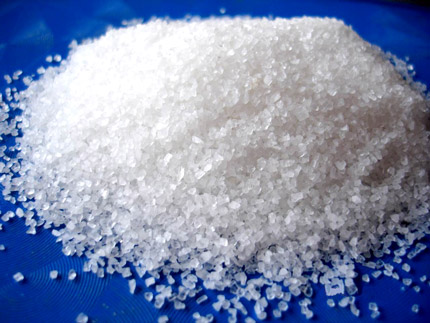
|
Um Mangroven in Meerwasser oder Brackwasser zu kultivieren wird nicht jodiertes Meersalz benötigt.
|
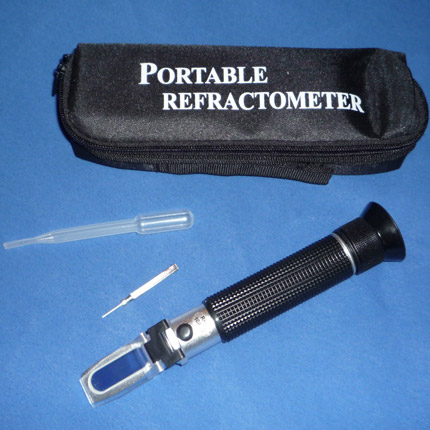
|
Die Salinität (Salzgehalt des Wassers) wird mittels eines Salz Refraktometers ermittelt.
|
Berechnungsbeispiele:
1. Meerwasser
Meerwasser hat im Durchschnitt 32 bis 35 Gramm Salz pro Liter. Dieses Beispiel arbeitet mit einem Durchschnittswert von 33 Gramm Salz pro Liter.
Eine Mangrove wird in einen Topf mit 3,8 Liter Volumen gepflanzt welcher dann in einen Übertopf gestellt wird oder einen Untersetzer erhält.
3,8*33 = 125 Gramm Salz sind erforderlich.
2. Brackwasser
Brackwasser hat im Durchschnitt 10 bis 20 Gramm Salz pro Liter. Dieses Beispiel arbeitet mit einem Durchschnittswert von 15 Gramm Salz pro Liter.
Es wird ein Mangrovenbecken mit den Maßen B:120cm T:40cm H:50cm eingerichtet. Wie viele Mangroven darin gepflanzt werden ist für die Berechnung unwichtig. Das Becken wird mit 15cm Substrat gefüllt, der Wasserstand endet bei 25cm.
120*40*25 = Volumen = 120.000 kubik Zentimeter
120.000/1.000 = 120 Liter
120*15 = 1,8 kg Salz sind erforderlich.
Hinweis:
Die Salinität (Salzgehalt) steigt und sinkt mit der Menge an Wasser die vorhanden ist. Wird Wasser verbraucht bzw. verdunstet, so steigt die Salinität im Wasser, unmittelbar nach dem Gießen durch Süßwasser sinkt die Salinität. Mangroven sind an Schwankungen der Salinität gewöhnt und können damit sehr gut umgehen.
ACHTUNG:
1. Es darf nur nicht jodiertes Salz verwendet werden
2. Salz verschwindet nicht bzw. wird nicht aufgebraucht, es bleibt im Boden enthalten, somit muss nur einmalig Salz dem Bodensubstrat / Wasser hinzugefügt werden. Erst beim Umtopfen in einen größeren Topf muss die Salinität angepasst werden oder wenn Bodensubstrat oder Wasser der Mangrove entfernt werden.
|
|
|
|
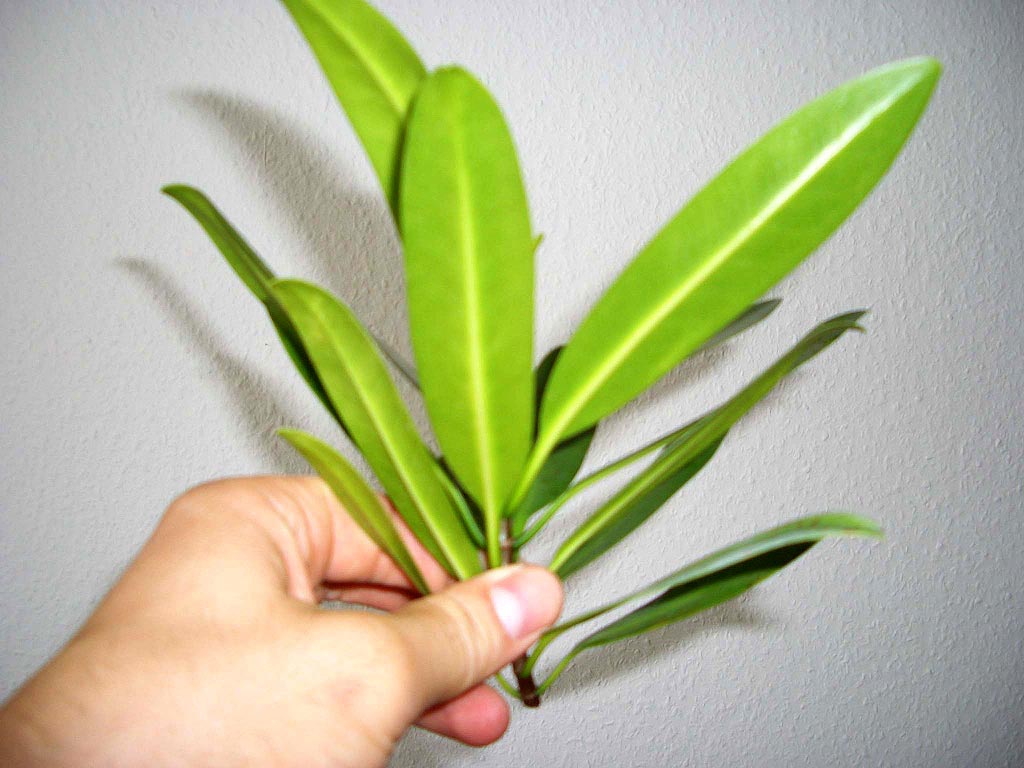
Abb. 1: Rhizophora mangle Steckling
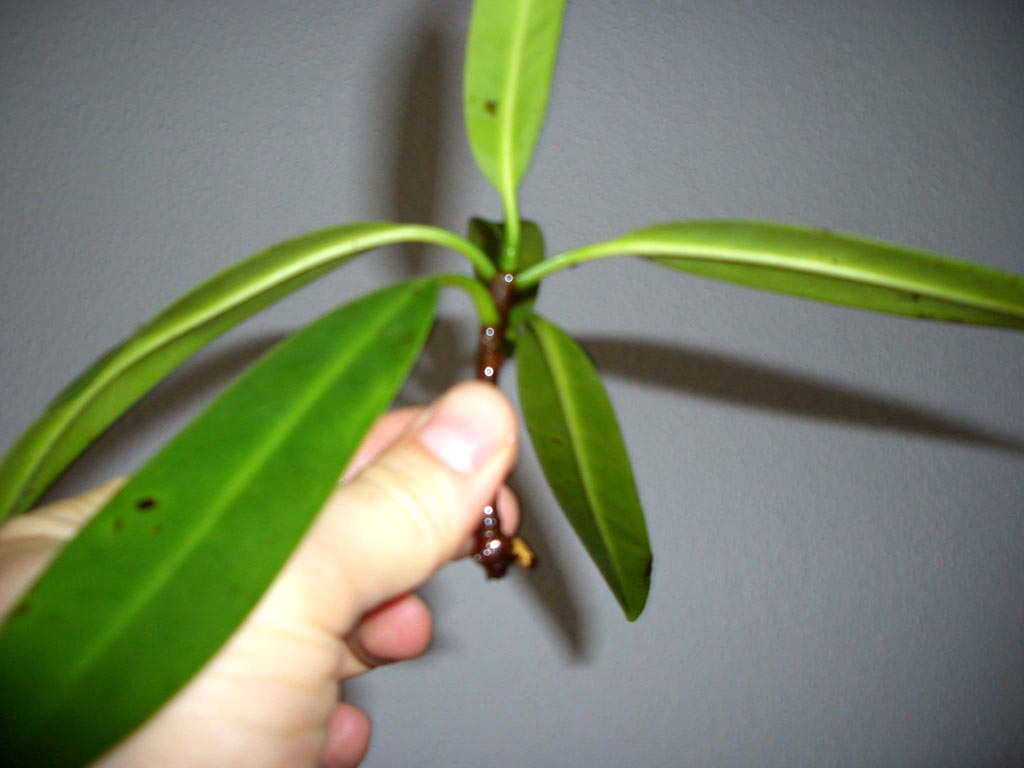
Abb. 2: Rhizophora mangle Steckling nach 6-8 Wochen
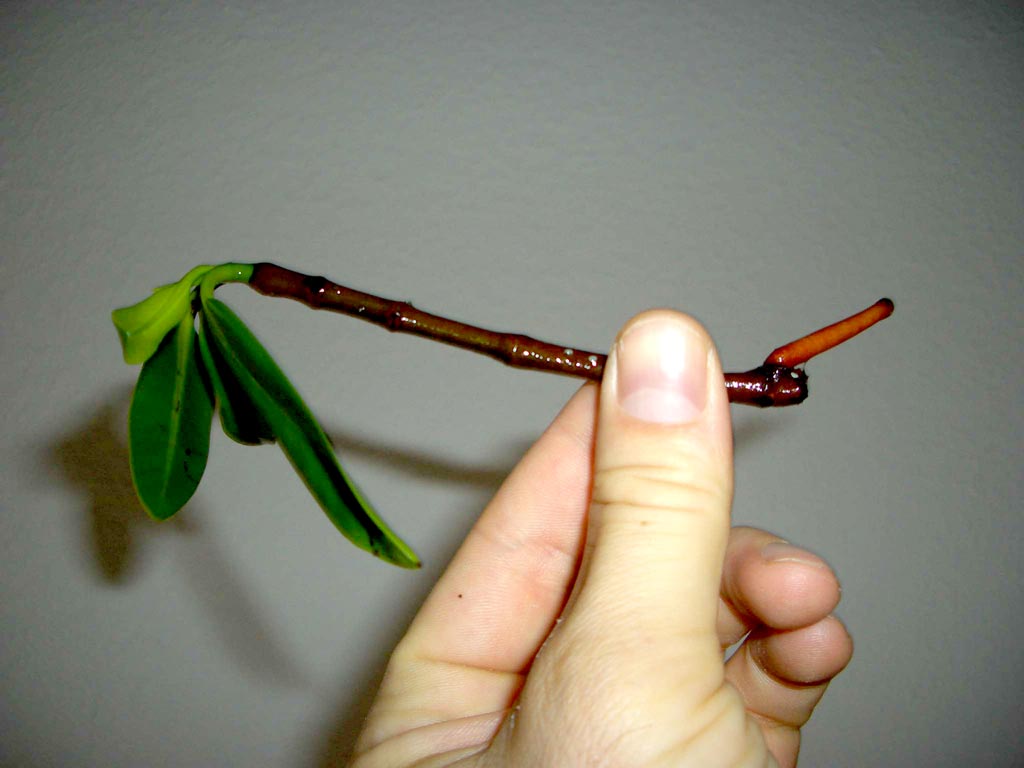
Abb. 3: Rhizophora mangle Steckling nach 6 Monaten
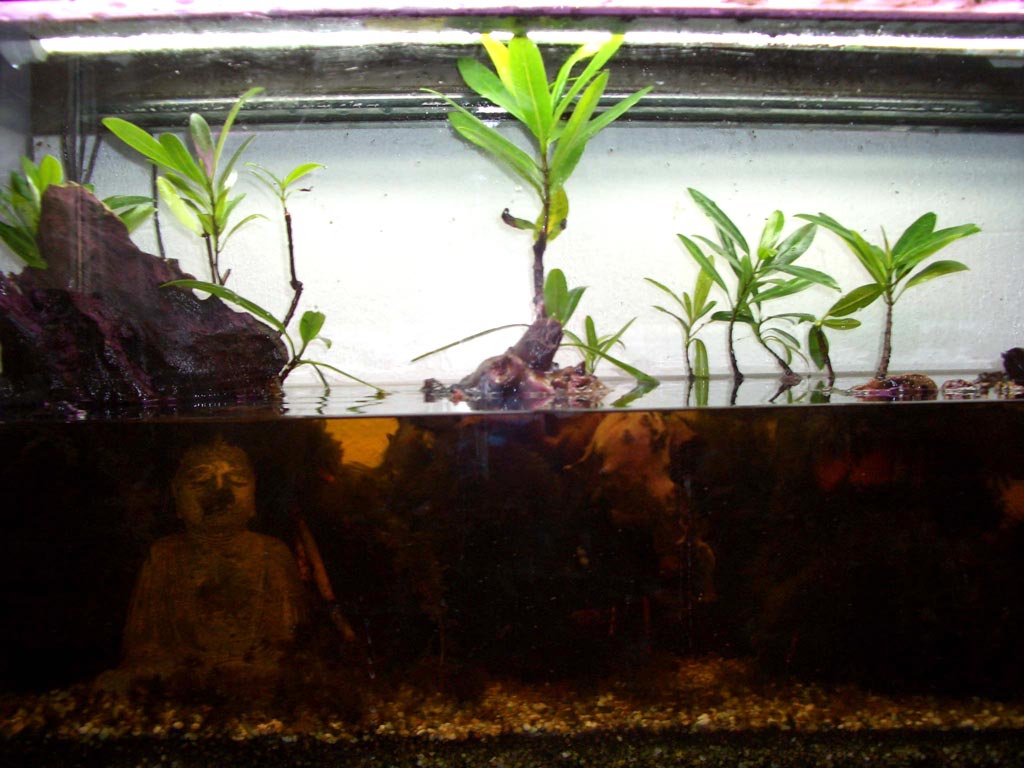
Abb. 4: Mangroven Steckling Aquarium
|
Bei dieser Art der vegetativen Vermehrung (asexuelle Reproduktion von Pflanzen) wird zunächst ein junger Trieb mit einem sterilen Messer oder einer Schere von der Mutterpflanze abgetrennt (Abbildung 1). Anschließend werden die unteren Blätter entfernt (Abbildung 2), sodass nur 2-3 Blattpaare am Steckling bleiben, und der blattfreie Teil entweder direkt im Wasser befestigt oder in einem gewässerten Substrat (z.B. Sand). Abbildung 4 zeigt einen mit Stecklingen unterschiedlichen Alters bestückten Tontopf. Nach ca. 6-8 Wochen bildet sich eine Wurzel aus (Abbildung 2).
Unter den folgenden Umweltbedingungen, lässt sich die Rote Mangrove (Rhizophora mangle) mit großer Wahrscheinlichkeit kultivieren. Bisher waren alle acht Versuche in den letzten fünf Jahren erfolgreich. Dazu wurde ein geschlossenes Aquarium verwendet in dem ansonsten Schlammspringer gehalten werden (Periphtalmus babarus).
Dieses Aquarium mit Abdeckung (Abbildung 4), welches nur halb voll mit Wasser gefüllt ist, hat sich als ideal erwiesen, durch die Abdeckung sowie den Wasserstand entsteht eine schöne Hitze, als auch Luftfeuchtigkeit im Luftbereich des Aquariums. Wasser- und Lufttemperatur betragen ca. 30°C. Die relative Luftfeuchtigkeit liegt bei nahezu 100%. Der Salzgehalt schwankt zwischen 6 und 12 Promille.
Inwieweit die einzelnen Faktoren zusammenspielen, ist mir nicht bekannt. Auf jeden Fall muss der Steckling im Wasser, bzw. einem gewässerten Substrat verankert sein, ansonsten gehen die Mangroven nach den Erfahrungen von Paul Marek nicht an.
Mangroven wachsen nicht schnell und entsprechend wachsen die Stecklinge nur sehr langsam an. Nach ca. 6-8 Wochen ist der erste Wurzelansatz zu erkennen. Nach einem halben Jahr sieht man die Wurzel schon deutlich (Abbildung 3).
Bei Rückfragen können Sie mich gerne unter martinover@gmx.de kontaktieren.
Autor: Martin Over
|
|
|
|
|
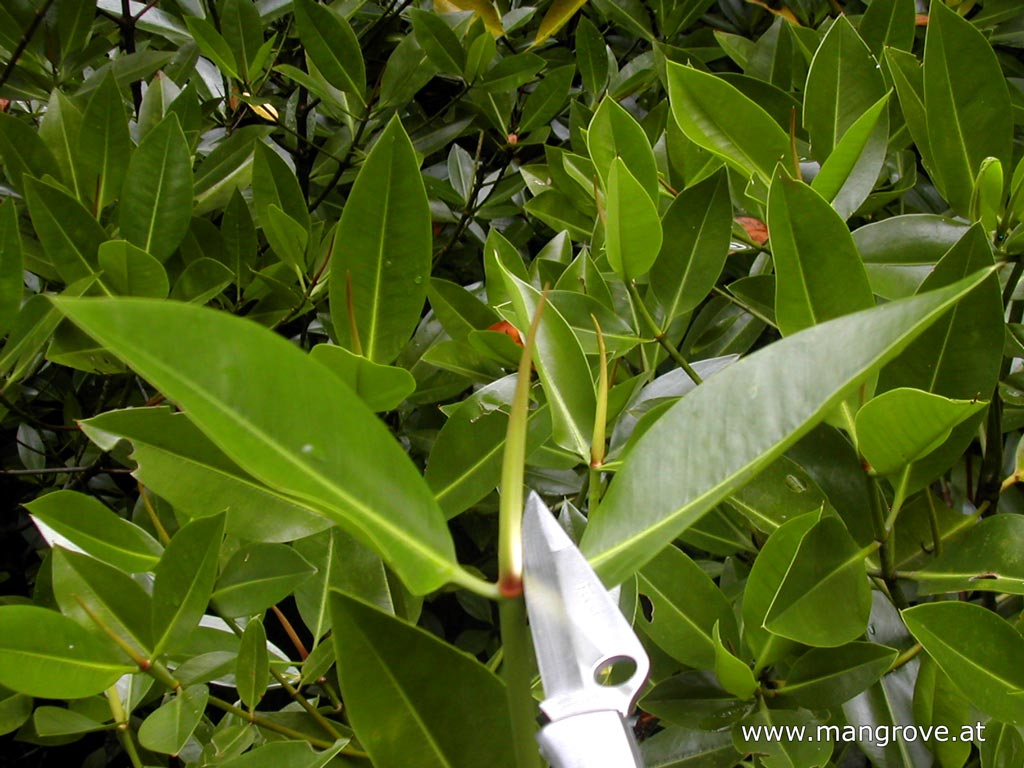
clean and sharp knife
|
The growth of mangroves as well as their shape can be influenced by trimming. Branches, shoots as well as aerial roots can be cut and controlled in growth and size.
Trimming mangroves is absolutely easy, use a clean and sharp knife and cut the branch, the shoot or the aerial root, most of the time prop roots need to be cut in aquariums or the like, the wound will heal quick, generally within a few days and normally develop two branches or up to 6 prop roots which grow directly next to the place the mangrove has been cut.
|
|
|
|
|
|
|
|
|
 |
|
 |
|






